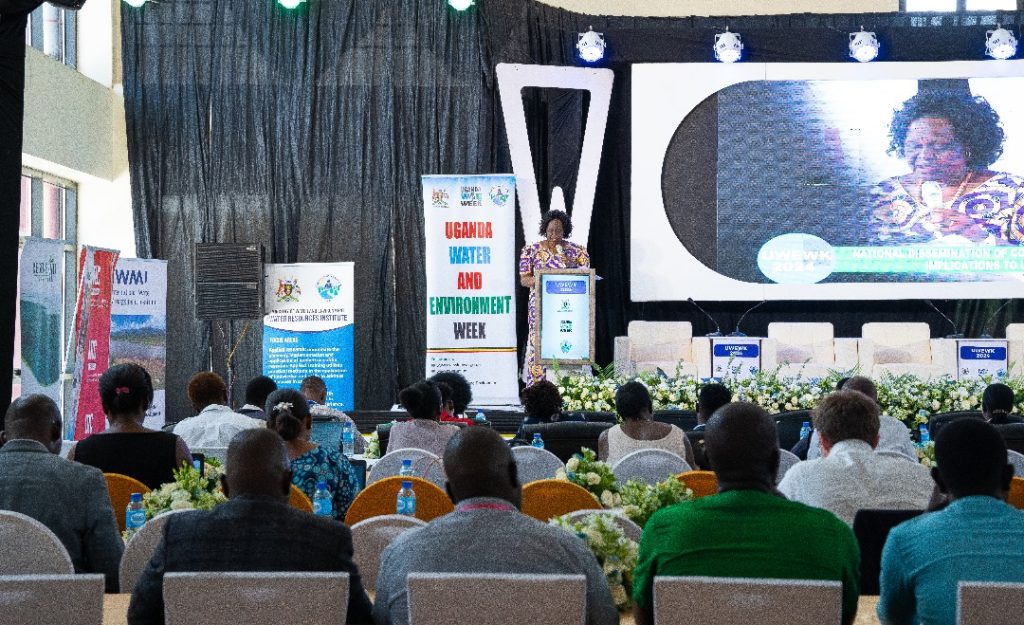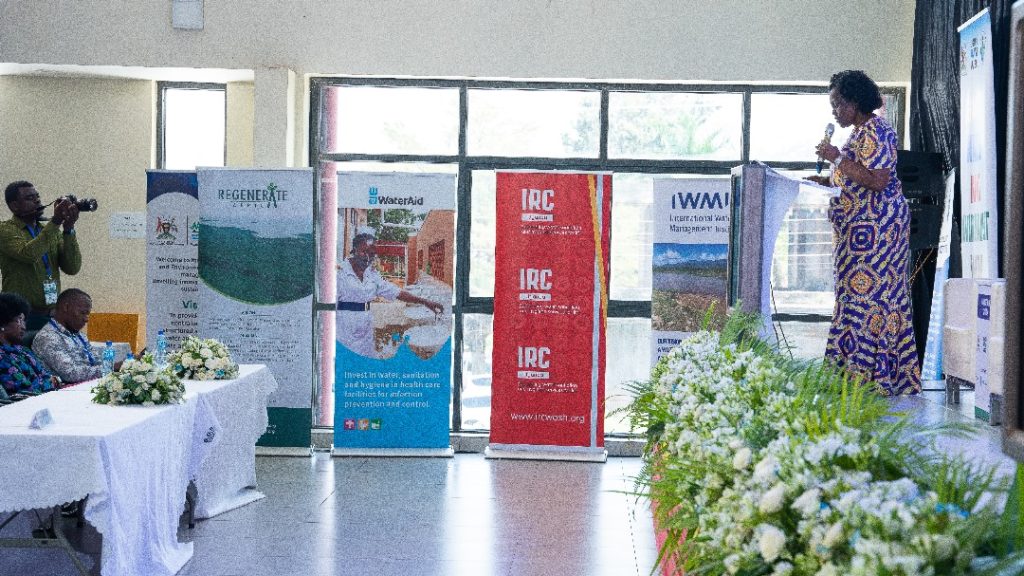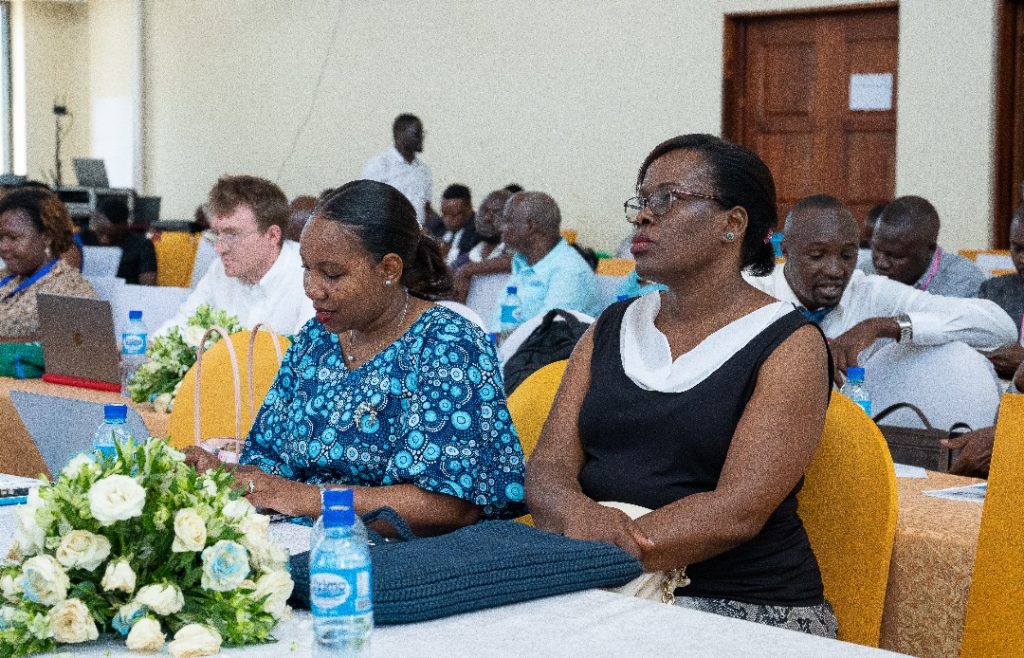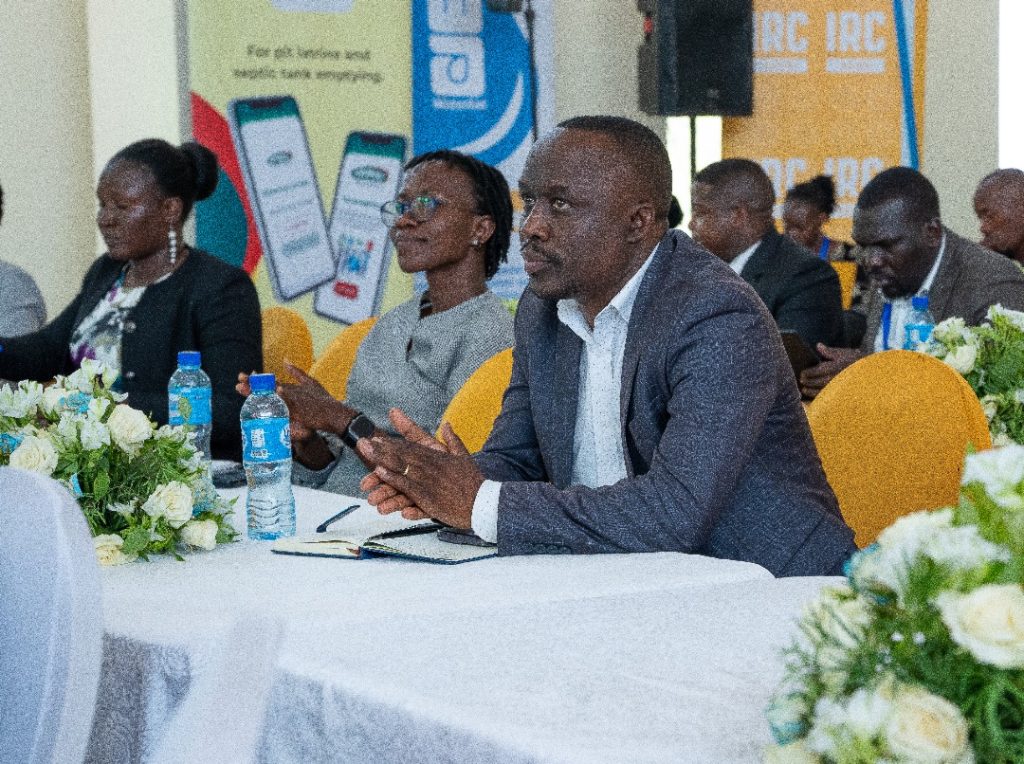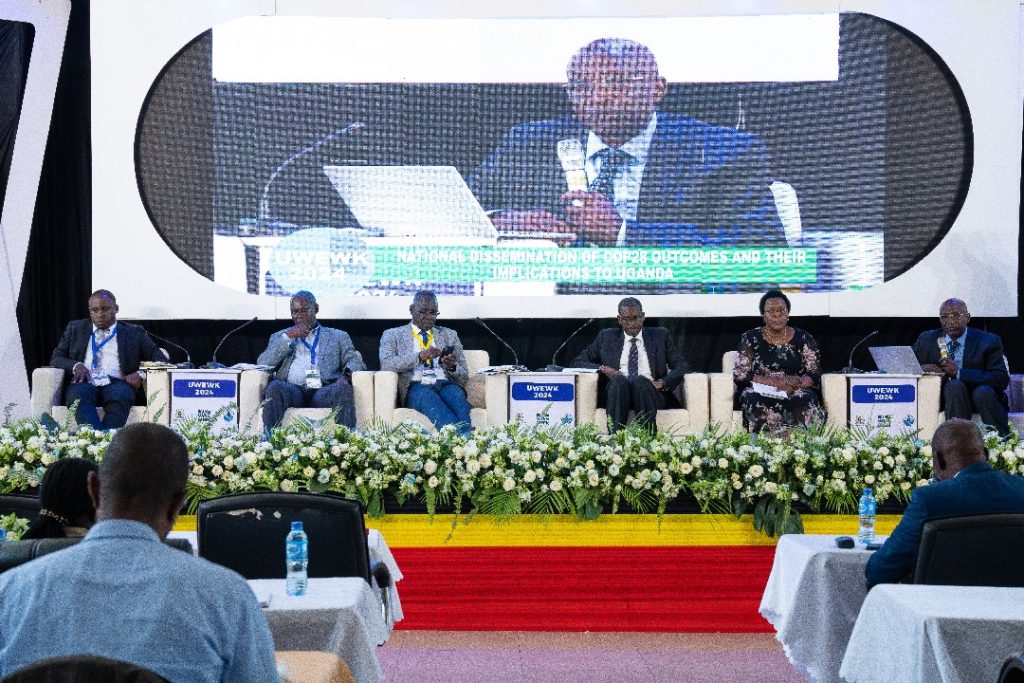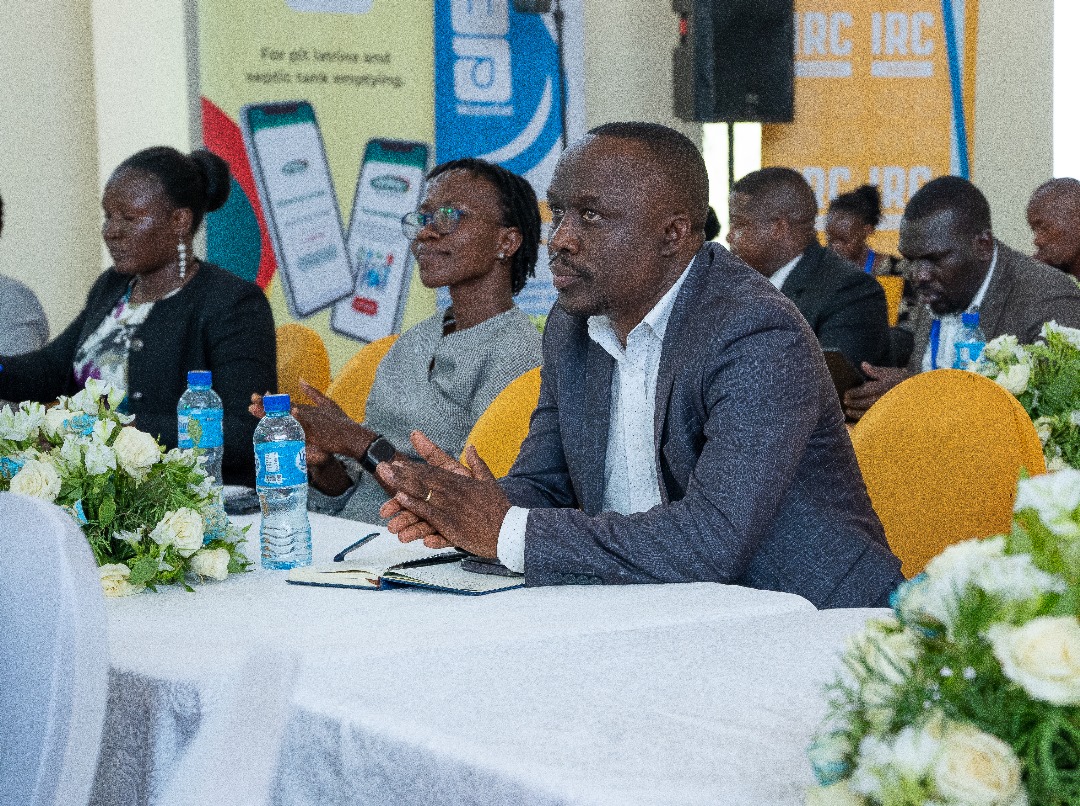Regenerate Africa at the Forefront of Climate Action!
We’re thrilled to share insights from our participation in the National Dissemination of COP 28 Outcomes and their Implications for Uganda, held on March 19, 2024.
The event aimed to analyze and share the significant outcomes of COP 28, focusing on key thematic areas crucial for climate action. Insights from esteemed speakers, including the Permanent Secretary, Commissioner Margaret Athieno Mwebesa, and Minister Beatrice Anywar, shed light on Uganda’s climate stance, achievements, and future endeavours.
Experts elaborated on thematic areas like adaptation, finance, technology, capacity building, mitigation, and gender, emphasizing their pivotal roles in addressing climate challenges.
KEY OUTCOMES:
ADAPTATION
a) At COP 27, a framework for the Global Goal on Adaptation (GGA) implementation was
established, which was further refined at COP 28. Two categories of targets were set: sectoral targets and dimensional targets. A two-year work program was initiated to develop indicators for sectoral targets, aiming to align them with financial considerations. Parties and observers were invited to submit their views on these indicators to ensure their relevance and effectiveness.
b) Negotiations on the establishment of the adaptation committee were left unresolved. This committee aims to assist parties worldwide in addressing adaptation issues. The pending matters
concerning its finalization are expected to be addressed at COP 29.
c) Matters pertaining to the Least Developed Countries (LDCs) were successfully concluded during COP 28 negotiations.
d) The first-ever Global Stocktake was conducted after ministerial intervention, marking a significant milestone in the adaptation efforts.
During discussions on adaptation, the lead negotiator highlighted the glaring oversight of health considerations despite the evident impacts of climate change on public health. He emphasized the detrimental effects of heat on physical and mental well-being, increased disease prevalence, and adverse pregnancy outcomes. Other notable impacts included community displacement, shifts in disease patterns, and shortened lifespans due to climate-related incidents like malnutrition and water scarcity. The negotiator also underscored the strain on infrastructure, hindering access to essential health services. He acknowledged the historical lack of prioritization of health in previous COPs, largely centred on emissions discussions. The negotiator commended organizations like Regenerate Africa for their efforts in advocating for the health-climate nexus, aiming to amplify this discourse at the national level. He highlighted WHO’s commitment to this issue, evident in the dedicated pavilion and Health Day during COP 28.
Additionally, he advocated for funding research and policy development at the intersection of health and climate change, strengthening early warning systems, fortifying health systems against climate impacts, and integrating health considerations into various funding mechanisms for climate action.
CLIMATE FINANCE
In the realm of climate finance, numerous discussions unfolded, with a focus on several key areas:
a) Operationalization and Funding of the Loss and Damage Fund: During COP 28, attention was drawn to the operationalization and funding arrangements of the Loss and Damage fund, with a substantial pledge of 792 million USD made. However, there remains a significant disparity between the available funds and the actual requirements, particularly in developing countries. It was emphasized that the burden of mobilizing these funds should not disproportionately fall on developing nations. Clarification on the operationalization of the fund is expected to be provided during COP 29 from the lobbying at the Pre-COP 29 ministerial meeting in Copenhagen and other Pre-COP 29 meetings.
b) Role of Climate Finance and Global Definition: The standing committee on finance deliberated on the role of climate finance and the establishment of a global definition. This discussion aimed to provide clarity and coherence in understanding climate finance at a global level.
c) Dialogue on Article 2.1(c) of the Paris Agreement: A dialogue was held in Sharm el Sheik focusing on Article 2.1(c), which complements Article 9 of the Paris Agreement. This dialogue aims to align finance flows with a trajectory towards low greenhouse gas (GHG) emissions and climate-resilient development, setting the stage for discussions at COP 29.
d) Technical Expert Dialogue on Climate Finance: The 8th technical expert dialogue addressed the new collective modified goal on climate finance, with a target of raising 100 million USD. COP 29 will witness a renewed quantification of the required climate finance.
Actions by the Ministry of Finance, Planning, and Economic Development:
1) National Climate Finance Strategy: The ministry formulated a National Climate Finance strategy aimed at attracting financing at both national and international levels, with a targeted amount of USD 21.8 billion by 2023.
2) National Green Taxonomy: A national Green Taxonomy was developed to outline the actions that the private sector can undertake concerning climate finance, providing a structured framework for sustainable investments.
3) Disaster Risk Financing Strategy: The ministry crafted a disaster risk financing strategy,
delineating innovative approaches to financing disasters in Uganda, thereby enhancing resilience and response mechanisms.
4) Country Climate Development Report: A comprehensive country climate development report was drafted for the World Bank, serving as a prerequisite for accessing funds from various financiers. This report provides a detailed overview of Uganda’s climate-related initiatives and priorities, facilitating informed decision-making and resource allocation.
TECHNOLOGY:
In the domain of technology, several key discussions took place:
a) Countries were urged to extend their support to the Nationally Designated Entities (NDEs) for technology, facilitating their ability to make submissions to the Climate Technology Center and Network (CTCN). The CTCN serves as an implementation arm of the Technology Mechanism under the United Nations Framework Convention on Climate Change (UNFCCC).
b) There was a significant emphasis, particularly from developed nations, on the adoption of artificial intelligence (AI) technologies. However, developing countries expressed a need for capacity building in this area, recognizing the considerable financial investments involved. They underscored the importance of carefully weighing the risks associated with AI that could compromise national security, while also acknowledging the potential benefits it could offer.
c) The discussions also delved into the necessity for capacity building and the execution of
Technology Needs Assessments (TNAs). The Climate Technology Center and Network (CTCN) along with the Technical Executive Committee were tasked with providing resources to complete TNAs, ensuring the inclusion of technology needs across various relevant sectors.
d) Resource mobilization for technology development and transfer was highlighted as a crucial aspect. Concerns were raised regarding the lack of resource mobilization by the UNFCCC for the CTCN. As a recommendation, it was proposed that the UNFCCC should engage with the United Nations Environment Programme (UNEP) to enhance resource mobilization efforts in this regard.
CAPACITY BUILDING:
During discussions on capacity building, the country highlighted significant gaps in its ability to effectively implement various climate-related policies and plans, including the Nationally Determined Contributions (NDCs), the Climate Change Act and associated regulations, project development, and the execution of other climate change interventions. It was emphasized that addressing these capacity gaps is crucial for the successful implementation of climate actions.
Parties were urged to mobilize resources dedicated to capacity building at the national level. There was a specific request to advocate for international bodies to allocate resources for capacity building during the Pre-COP 29 ministerial meeting in Copenhagen. This push underscores the importance of international cooperation and support in enhancing the capacity of nations, particularly developing countries, to effectively tackle climate change challenges and fulfil their commitments under global
climate agreements.
MITIGATION:
During COP 28, discussions revolved around the UAE consensus, acknowledging that limiting global warming to 1.5°C requires swift reductions in greenhouse gas emissions. There was a consensus on the necessity for developed countries to lead the charge in mitigation efforts, given that the focus was on implementing mitigation actions in countries that have not exceeded the emission limits set, particularly compared to developed nations. This highlighted the importance of ensuring a fair and just transition, especially considering that developing countries often face the brunt of forced mitigation actions. As a result, there was a shift in messaging from “phasing out” to “moderating” the transition from fossil fuels to clean energy sources.
GENDER:
Gender discussions at the event centered around the review of the Gender Action Plan (GAP), which is set to conclude by 2024. However, due to a limited timeframe for party submissions, the deadline was extended to March 31, 2024. These submissions will undergo synthesis and review by the UNFCCC, aiming for the approval of a new GAP at COP 29. Recommendations for COP 29 include incorporating grassroots activities into the new plan, as the previous GAP primarily focused on national-level workshops. Furthermore, it was emphasized that gender considerations should be integrated into all negotiations and conversations. Achieving gender balance in delegations and ensuring equal participation in climate action initiatives were highlighted as essential goals.
RegenerateAfrica #ClimateAction #COP28
